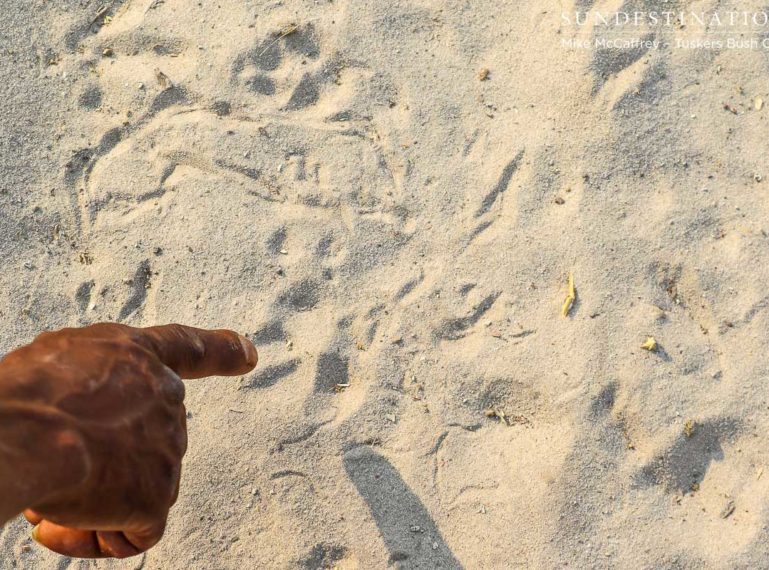
Just after dawn, in the soft morning light, the white sands around Tuskers Bush Camp are firm from the cool night air. It makes the wildlife tracks distinctive, and a walking safari through the bush both exciting and educational.
While walking safaris are limited in the major National Parks in Botswana, in the Moremi East Wilderness Area you are able to get into the bush with a trained tracker. Without the loud rumble of a safari vehicle, you are able to have a much more intimate experience. It enables you to see the land from the perspective of the animals that live in it.
The first observation to make is the direction of the wind, as walking upwind gives you a better chance of finding wildlife before it senses you, and maybe more importantly, does not allow predators to smell you before you see them.
Tracks are everywhere, and going every which way. Just at the watering hole in front of camp we found bat eared fox, African wildcat, lion, giraffe, kudu and elephant tracks, as well as a cobra skin hanging in the brush. However, your tracking guide is able to derive a story of what happened the night before from all the chaos.
Big cats like leopards and lions can retract their claws, whereas hyenas and cheetah cannot, so claw mark impressions can help you distinguish between species. Bird prints hop around everywhere, but you will be able to distinguish the kori bustard by its large size, and the talon imprint which drags on in front of the print. Hoof marks are also common, but you will know you are tracking a zebra, if the front of the print is closed, and you can see two triangle shapes in the back of the print which other hoofed animals do not have.
However, species identification is just stage one. Beyond that, a good tracker can tell the size of the animal from the depth of the print in the sand, and length between the strides. Further, some species like elephants, buffalo and impala males are often solitary, so the presence of a single set of tracks might also help tell the gender of the animal.
Finally, probably the hardest sign to read is the age of the track. It is important to know if the animal just passed by, or was there a while ago. A good tracker can sometimes tell you within hours of when the track was made. This is more of an art based on knowledge passed down through generations of trackers, who then spend a lifetime in the bush.
Many factors can help a tracker make this determination. It is important for the tracker to understand the wind and humidity in the air. This can help them examine even the smallest displacement of granules of sand and make a judgement about how much time it would take them to shift in that way.
Overall, it is a fascinating experience, and while you cannot expect to become a tracker overnight, a couple lessons from a master tracker at Tuskers Bush Camp will certainly take your safari knowledge to the next level.





Leave a Comment